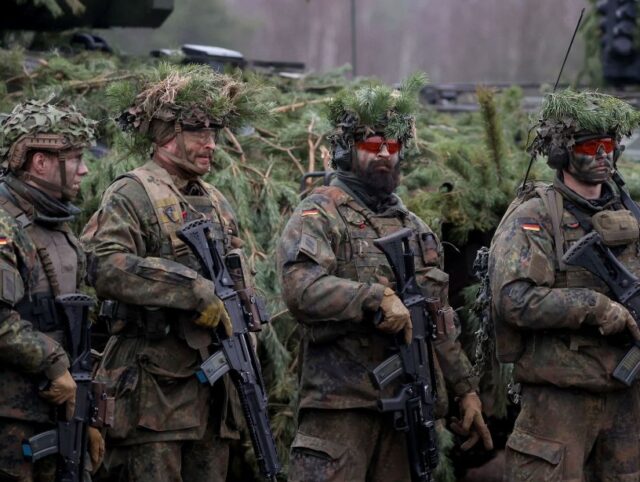The German reserve forces are only a fraction of the officially stated size, lack equipment and training, and is a force “that still largely exists on paper”, says the chief of the German reserves association.
Berlin is looking to make its armed forces more effective after years of under-investment, and Russian aggression reaching the borders of the European Union. The reserve forces are seen to be an important part of this plan, yet as the leader of the group which represents the interests of reserve soldiers, it is far from being able to meet these goals and appears to resemble more a paper tiger than a valued defence component.
Speaking to German newspaper the Stuttgarter Zeitung, retired Lieutenant Colonel, former conservative (CDU) member of Parliament, and now reserve forces association leader Patrick Sensburg said they are badly run and considerably underfunded.
Far from the official total number of reserves on the books of around 930,000 people — achieved because by law everyone in Germany with past military service is a reservist forever — actually only “around 34,000” of them are in any way active or recently trained. And even those, Sensburg says, are trained under “poor conditions”.
German Tanks Roll East: Berlin Approves Leopard 2s for Ukraine https://t.co/umMWVjhD8W
— Breitbart London (@BreitbartLondon) January 25, 2023
The reserves have to beg the regular forces for uniforms, even routine military training like target shooting practice is difficult to achieve, and have no military vehicles. At best, says the association boss, reservists can use civilian cars and most bizarrely of all, reserve tank commanders don’t get to train in real tanks. Instead, they perform their manoeuvres “on foot”.
Exercises don’t happen often Sensburg revealed, but when they do, morale and interest is so low officers are “happy if only a third of the soldiers notified turn up”.
The reserves would have a wide range of roles in a time of crisis, from guarding power stations and transporting the wounded to filling gaps on the front line, yet at present the force isn’t capable of doing those jobs, says Sensburg. Indeed, it is a “force that still largely exists on paper.”
Obviously to the veteran officer increasing the equipment, vehicles, and weapons available to the reserves is an essential step, but a change towards the way the reserve forces are organised is needed too. Sensburg told the paper that there should at least be a requirement for soldiers in the reserve to put in a fortnight’s training every two years.
In comparison, the British Army Reserve — which is also struggling to recruit — asks its members for 27 days of service a year. If reservists meet this requirement, they get a tax-free cash bonus, known in traditional military parlance as a ‘bounty’.
The revelations that the German military suffers from equipment shortages and faults, being reduced to training by make-believe have long precedents. In 2015 it was reported that German soldiers training alongside NATO allies used black-painted broomsticks to simulate guns while their colleagues from abroad used the real thing. In 2018, it was reported of the theoretical fleet of 128 Eurofighter Typhoons, just four of the fighter jets were actually in front-line condition.
Now, the donation of German tanks and equipment to Ukraine has left a “huge gap” in the nation’s defences, as working equipment is sent east but nothing is ready to replace it. In one remarkable turn of events, the new armoured vehicles ordered by the German government to replace old Cold War-era equipment have been found to be so unreliable the old tracked armour has been brought back out of mothballs to cover.
Germany Brings Back Vintage Armoured Vehicles After New Replacements Suffer Mass Break Down https://t.co/GSIfg5jaCA
— Breitbart London (@BreitbartLondon) December 19, 2022

COMMENTS
Please let us know if you're having issues with commenting.